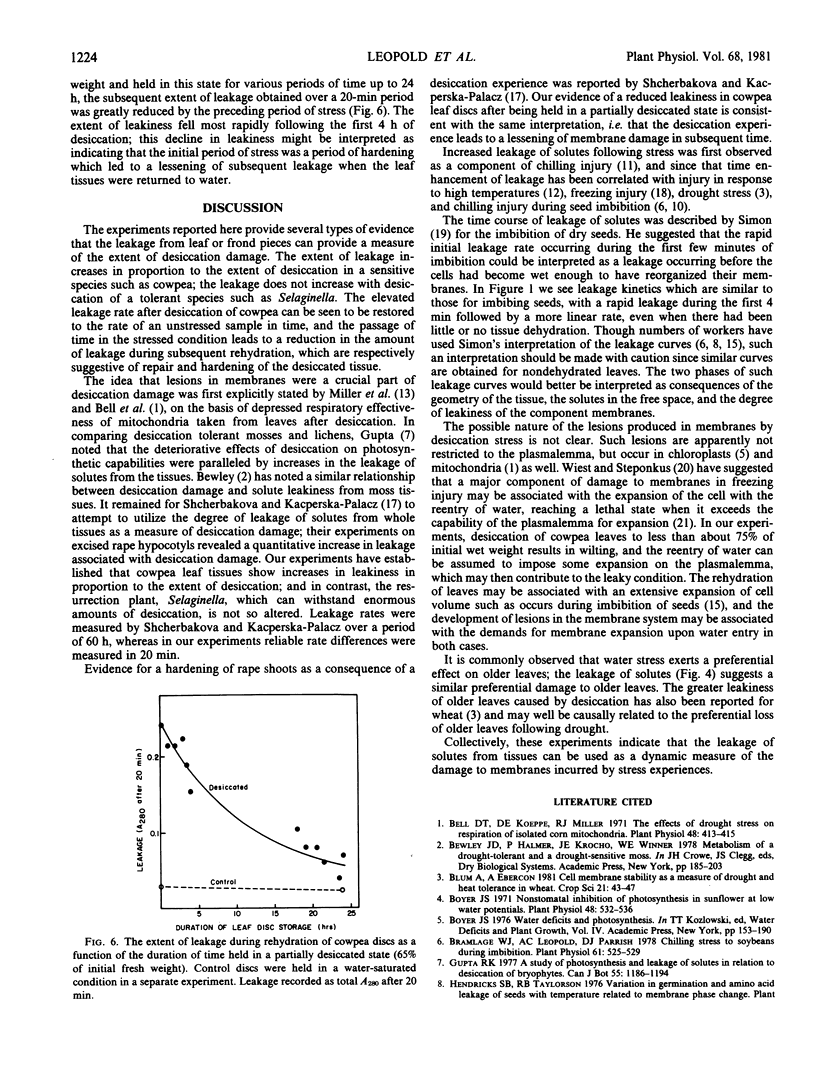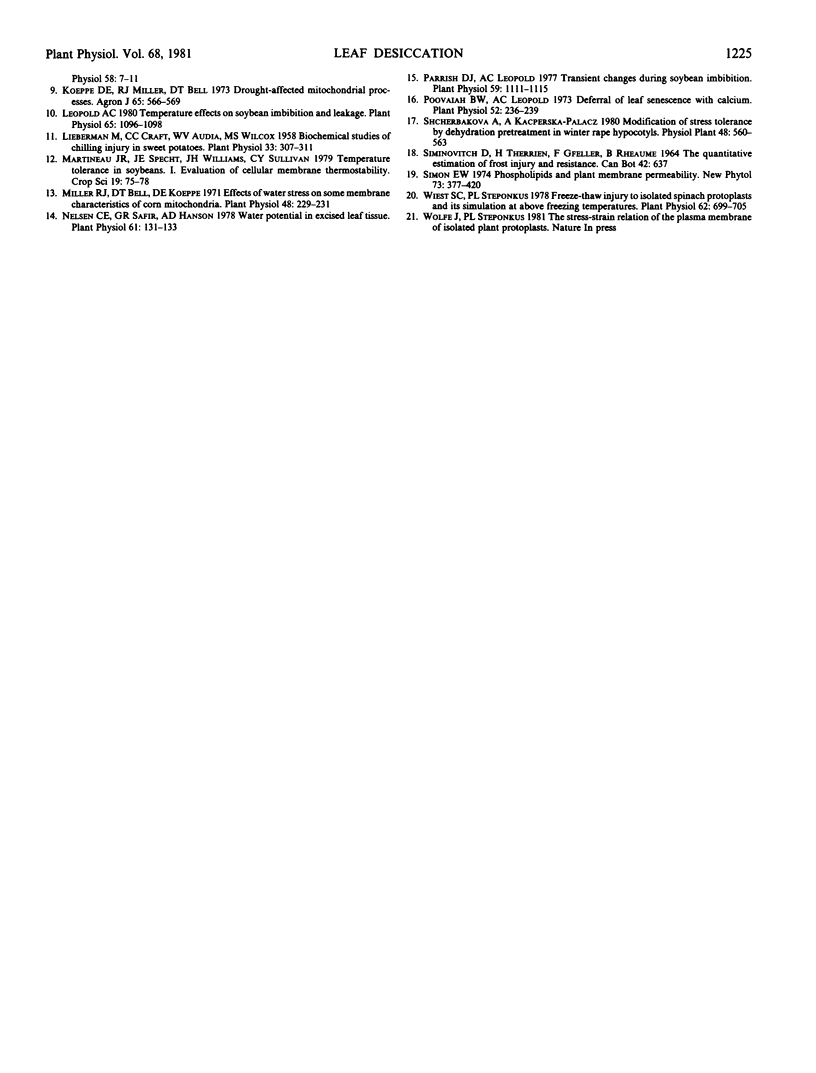Abstract
The leakage of solutes from foliar tissue is utilized as a dynamic measure of apparent changes in membrane integrity in response to desiccation. It is found that rehydrating leaf discs of cowpea (Vigna sinensis [L.] Endl.) show increasing leakiness in proportion to the extent of prior desiccation, whereas Selaginella lepidophylla Spring., a resurrection plant, does not. The elevated leakage rate of cowpea after desiccation recovers with time, and the passage of time in the stressed condition results in reduced subsequent leakiness. These characteristics are interpreted as suggesting that the leakage of solute reflects the condition of cellular membranes, and that desiccation stress leads to lesions in the membranes. The kinetics of solute leakage is suggested as a simple means of following changes in membrane lesions and associated features of membrane repair and hardening.
Full text
PDF



Selected References
These references are in PubMed. This may not be the complete list of references from this article.
- Bell D. T., Koeppe D. E., Miller R. J. The effects of drought stress on respiration of isolated corn mitochondria. Plant Physiol. 1971 Oct;48(4):413–415. doi: 10.1104/pp.48.4.413. [DOI] [PMC free article] [PubMed] [Google Scholar]
- Boyer J. S. Nonstomatal inhibition of photosynthesis in sunflower at low leaf water potentials and high light intensities. Plant Physiol. 1971 Nov;48(5):532–536. doi: 10.1104/pp.48.5.532. [DOI] [PMC free article] [PubMed] [Google Scholar]
- Bramlage W. J., Leopold A. C., Parrish D. J. Chilling Stress to Soybeans during Imhibition. Plant Physiol. 1978 Apr;61(4):525–529. doi: 10.1104/pp.61.4.525. [DOI] [PMC free article] [PubMed] [Google Scholar]
- Leopold A. C. Temperature effects on soybean imbibition and leakage. Plant Physiol. 1980 Jun;65(6):1096–1098. doi: 10.1104/pp.65.6.1096. [DOI] [PMC free article] [PubMed] [Google Scholar]
- Lieberman M., Craft C. C., Audia W. V., Wilcox M. S. Biochemical Studies of Chilling Injury in Sweetpotatoes. Plant Physiol. 1958 Sep;33(5):307–311. doi: 10.1104/pp.33.5.307. [DOI] [PMC free article] [PubMed] [Google Scholar]
- Miller R. J., Bell D. T., Koeppe D. E. The effects of water stress on some membrane characteristics of corn mitochondria. Plant Physiol. 1971 Aug;48(2):229–231. doi: 10.1104/pp.48.2.229. [DOI] [PMC free article] [PubMed] [Google Scholar]
- Nelsen C. E., Safir G. R., Hanson A. D. Water potential in excised leaf tissue: comparison of a commercial dew point hygrometer and a thermocouple psychrometer on soybean, wheat, and barley. Plant Physiol. 1978 Jan;61(1):131–133. doi: 10.1104/pp.61.1.131. [DOI] [PMC free article] [PubMed] [Google Scholar]
- Parrish D. J., Leopold A. C. Transient changes during soybean imbibition. Plant Physiol. 1977 Jun;59(6):1111–1115. doi: 10.1104/pp.59.6.1111. [DOI] [PMC free article] [PubMed] [Google Scholar]
- Poovaiah B. W., Leopold A. C. Deferral of leaf senescence with calcium. Plant Physiol. 1973 Sep;52(3):236–239. doi: 10.1104/pp.52.3.236. [DOI] [PMC free article] [PubMed] [Google Scholar]
- Wiest S. C., Steponkus P. L. Freeze-thaw injury to isolated spinach protoplasts and its simulation at above freezing temperatures. Plant Physiol. 1978 Nov;62(5):699–705. doi: 10.1104/pp.62.5.699. [DOI] [PMC free article] [PubMed] [Google Scholar]


